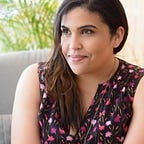Let’s Be Honest; Most Diversity Programs are for White People
I can’t be the only person that has sat in a “diversity meeting” and thought to myself, “who is this for?”As a woman of color, I rarely, if ever felt like the content was for me. But I often felt like the content was about me, namely, how to deal with me.
The focus of many diversity presentations that I have sat in has been on how to navigate a more diverse workspace.
“Things you shouldn’t ask female candidates during an interview.”
“Why having people of color in positions of leadership is important.”
These tips are not intended to help me grow and thrive in the workspace, because I am not the intended audience.
I know first-hand how invasive it is to hear “how soon do you plan to get pregnant” in an interview setting. I know the importance of having faces that look like mine, occupying all levels of an organization.
If I am not the audience, who is?
The intended audience is often white people, particularly white cisgendered men that are being asked to share space and power. Though the road to most diversity programs has been paved in good intentions, the result was and often still is, that those programs were created for white people, by white people to make white people comfortable with “diverse” co-workers.
The title of these conversations might as well be “Gay black people are coming, they might even be your boss one day, and we need to get you prepared.”
But where is the content for those people that are “coming to diversify the space?” Who is speaking to that audience?
Looking beyond white faces
I am a brown girl, living in a very white city and I could use some tools. What would help me are topics like
“Bringing my whole self to work, even when it is hard.”
“How I can navigate white space all day without losing myself.”
“Being an ally for other people that come from marginalized communities, but for which I don’t belong.”
“Where to go and who to see when the company is failing its commitments to me.”
When we create diversity programs that center the needs of dominate groups over the needs and concerns of people from marginalized groups, we are saying those needs are the needs that the company cares about. We are suggesting that their success and comfort is the primary concern.
How we all can do better
Be thoughtful about who your audience is and what their needs will be when crafting diversity training and programs at your organization. Include all people in your conversation. If you provide tips for interviewing women, provide tips to women on how to navigate inappropriate interview questions. If you speak to the importance of having people of color in the C-Suite, speak to how you can hold the organization accountable if you are not getting feedback on your career ladder.
Recognizing that the people in your organization have different needs and concerns is core to diversity and inclusion work. If what you want in your organization is true inclusion, center your employees, all of them, in these critical conversations.
